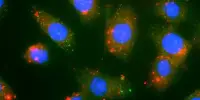The Massachusetts Institute of Technology (MIT) believes it has achieved an uncommon and startling discovery: light appears to be capable of evaporating water without the usage of heat.
The researchers wanted to improve the efficiency of desalination, which involves removing salts and minerals from water by evaporating it and then cooling the vapor back down to liquid. They were attempting to speed up the healing process by immersing dark, light-absorbing materials in water. They were held back, as they always are [curses Newton], by a number of physical principles, in this case, the thermal limit, which is the quantity of evaporation that should occur for a given input of heat, taking physical principles such as the law of conservation of energy into account.

However, in recent years, several teams have recorded evaporation rates that exceed that limit. The evaporation rate was twice the thermal limit in one experiment where the water was contained in hydrogels, which are three-dimensional networks of water-insoluble polymer chains that can hold massive volumes of water. Despite their skepticism, this team chose to conduct their own experiments, using testing materials provided by earlier researchers.
“We tested it under our solar simulator, and it worked,” stated mechanical engineering professor Gang Chen in a press release. “So, we believed them now.”
They then started testing their own hydrogels. They began exposing these hydrogels to different wavelengths of light, carefully measuring the amount of liquid lost to evaporation, based on the notion that photons of light were knocking out water molecules on the surface of the water. They were able to breach the thermal limit once more, with the most efficient evaporation taking place under a specific wavelength of green light. The evaporation rate did not surpass the thermal limit in the identical experiment without light, where electricity was utilized to heat the material instead.
“We interpret these observations by introducing the hypothesis that photons in the visible spectrum can cleave water clusters off surfaces due to large electrical field gradients and quadrupole force on molecular clusters,” the researchers said in the report. “We call the light-induced evaporation process the photomolecular effect.”
Water and hydrogels do not absorb much light, but when combined, they become good absorbers without the need for dyes to help absorption, as Chen said in the news release.
It could have practical implications in the real world, such as enhancing and lowering the cost of desalination. Furthermore, if water evaporates in the presence of light, it may have an impact on climate models and enhance them by being integrated in the future.
















